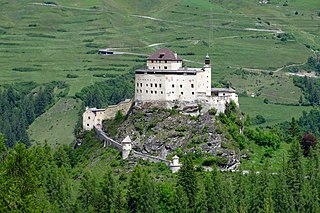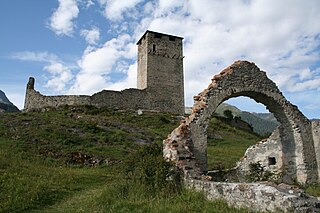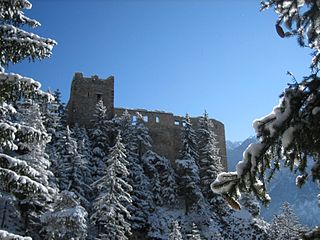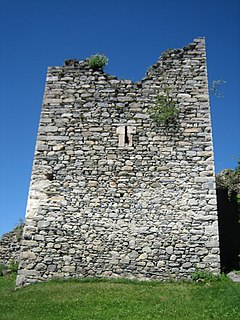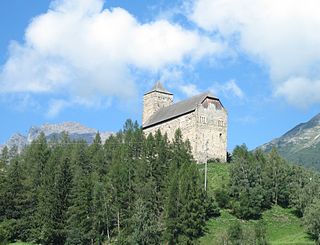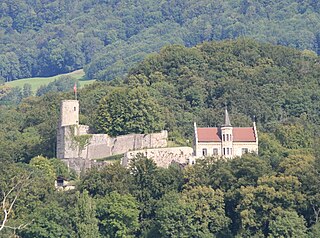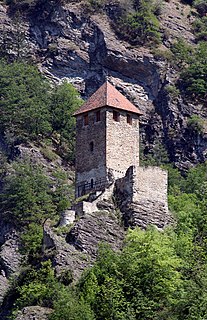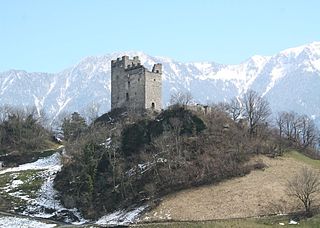| Pala Castle | |
|---|---|
| Tor di Pala Torre Palas | |
| San Vittore | |
View from the village | |
| Coordinates | 46°14′23.35″N9°06′19.27″E / 46.2398194°N 9.1053528°E Coordinates: 46°14′23.35″N9°06′19.27″E / 46.2398194°N 9.1053528°E |
| Type | hill castle |
| Code | CH-GR |
| Height | 310 m above the sea |
| Site information | |
| Condition | ruin |
| Site history | |
| Built | 12th century |
Pala Castle (Italian : Torre di Pala) is a tower in the municipality of San Vittore of the Canton of Graubünden in Switzerland. It is a Swiss heritage site of national significance. [1]

Italian is a Romance language of the Indo-European language family. Italian, together with Sardinian, is by most measures the closest language to Vulgar Latin of the Romance languages. Italian is an official language in Italy, Switzerland, San Marino and Vatican City. It has an official minority status in western Istria. It formerly had official status in Albania, Malta, Monaco, Montenegro (Kotor) and Greece, and is generally understood in Corsica and Savoie. It also used to be an official language in the former Italian East Africa and Italian North Africa, where it plays a significant role in various sectors. Italian is also spoken by large expatriate communities in the Americas and Australia. Many speakers of Italian are native bilinguals of both standardized Italian and other regional languages.

Municipalities are the lowest level of administrative division in Switzerland. Each municipality is part of one of the Swiss cantons, which form the Swiss Confederation. In most cantons municipalities are also part of districts or other sub-cantonal administrative divisions.

San Vittore is a municipality in the Moesa Region in the Swiss canton of Grisons.









